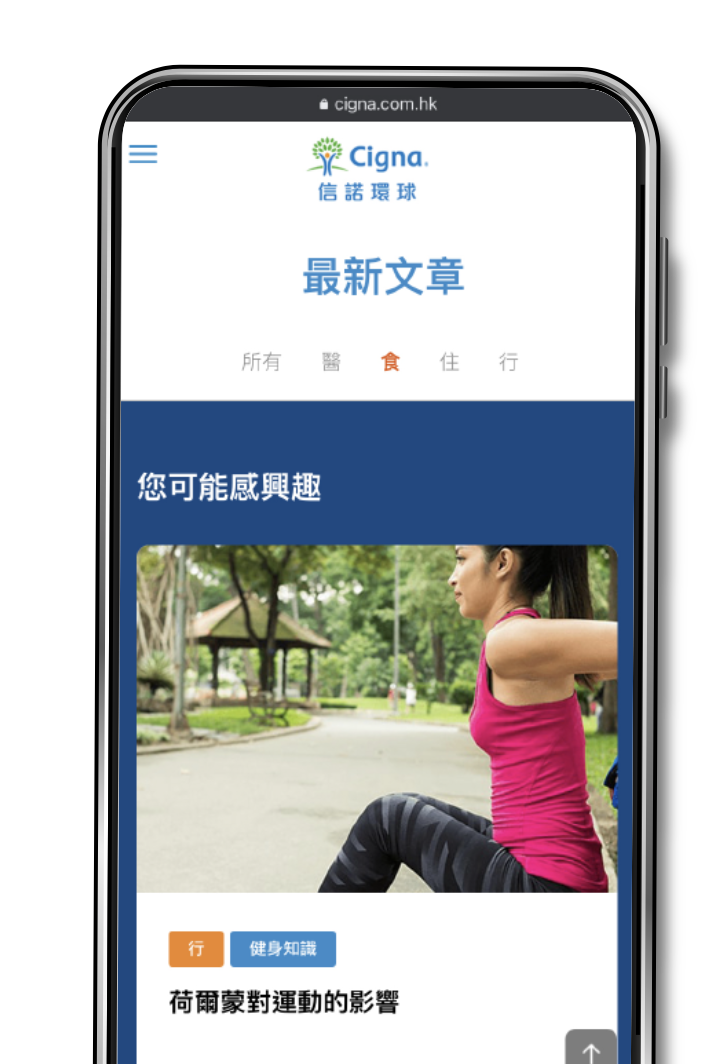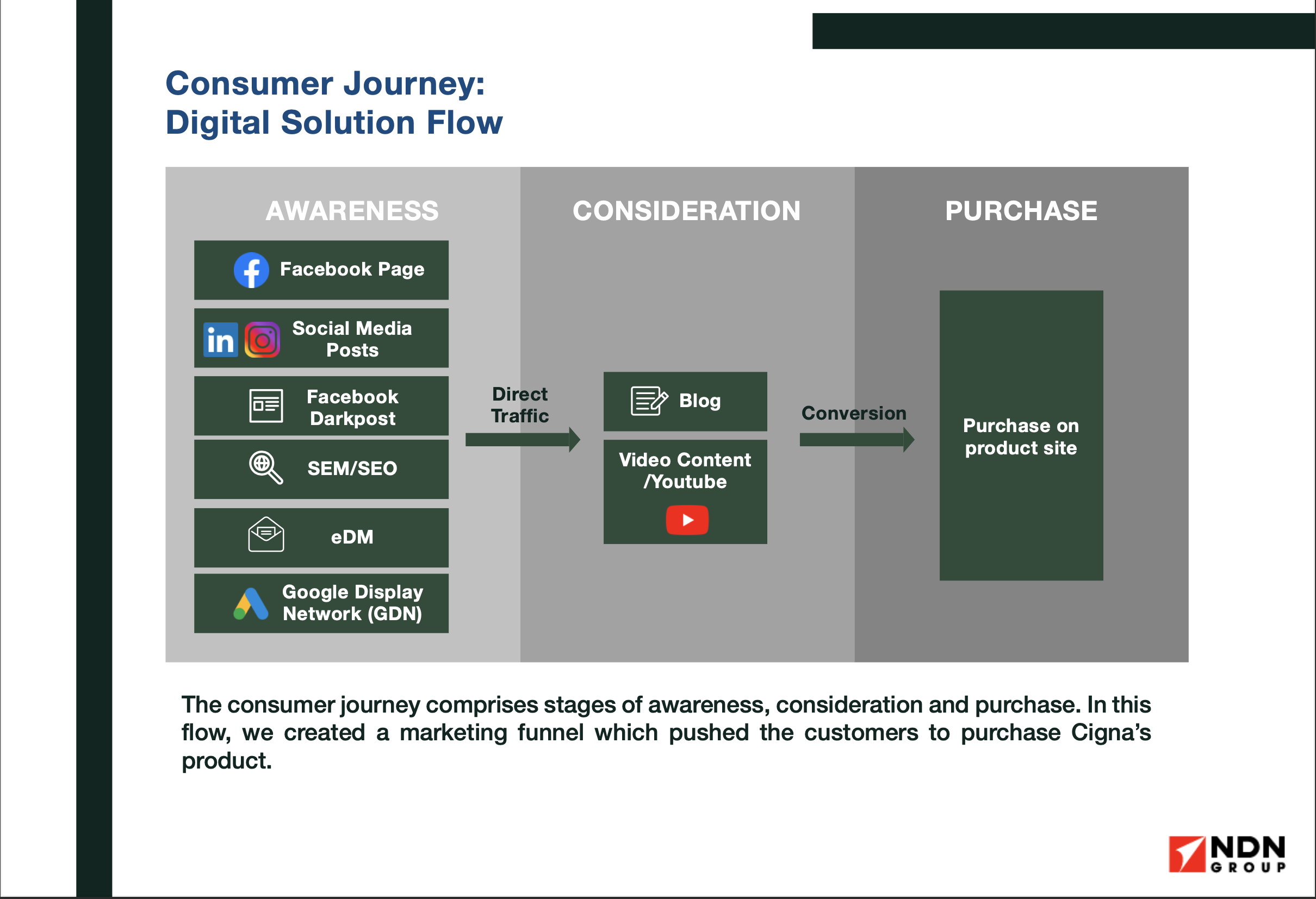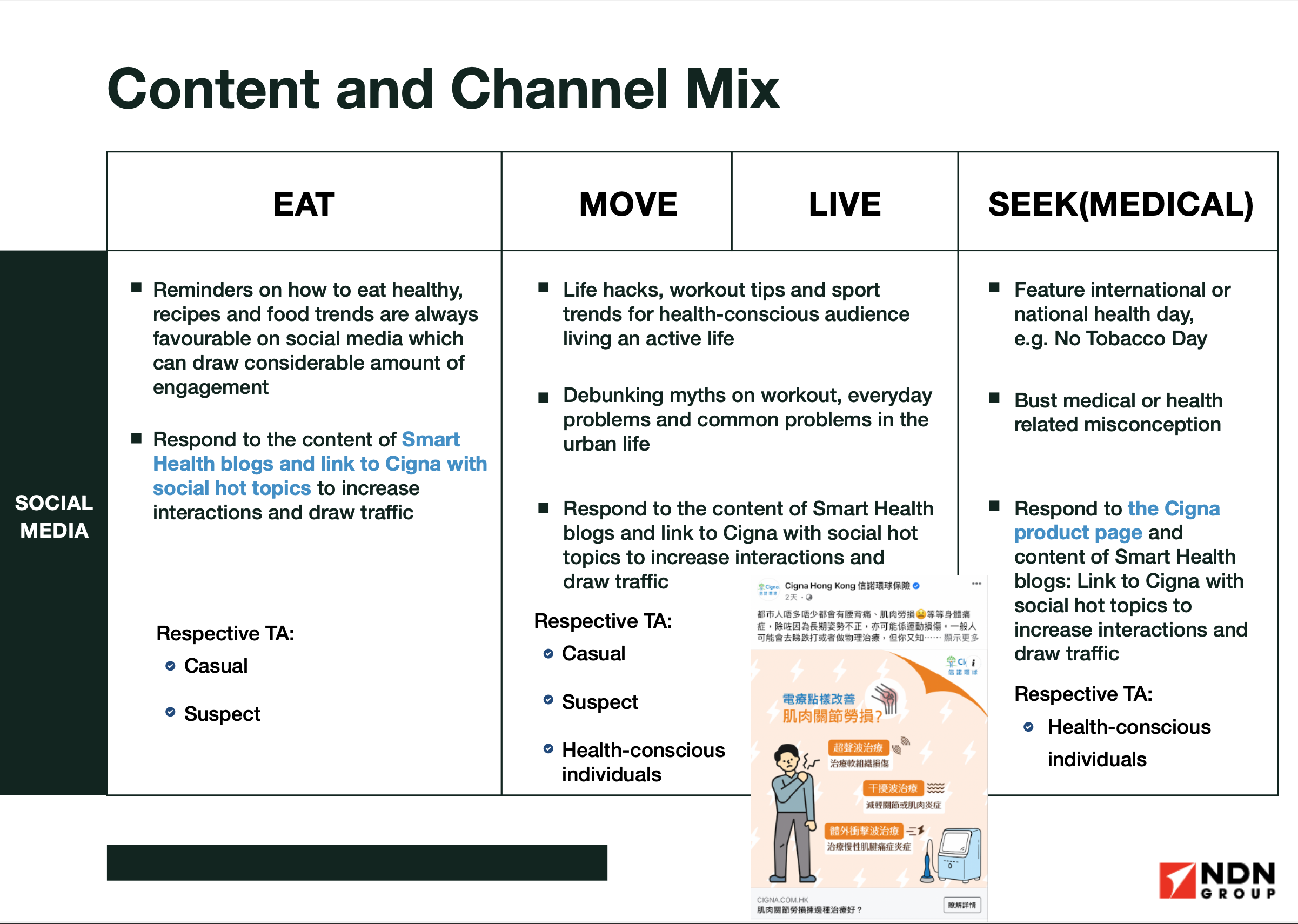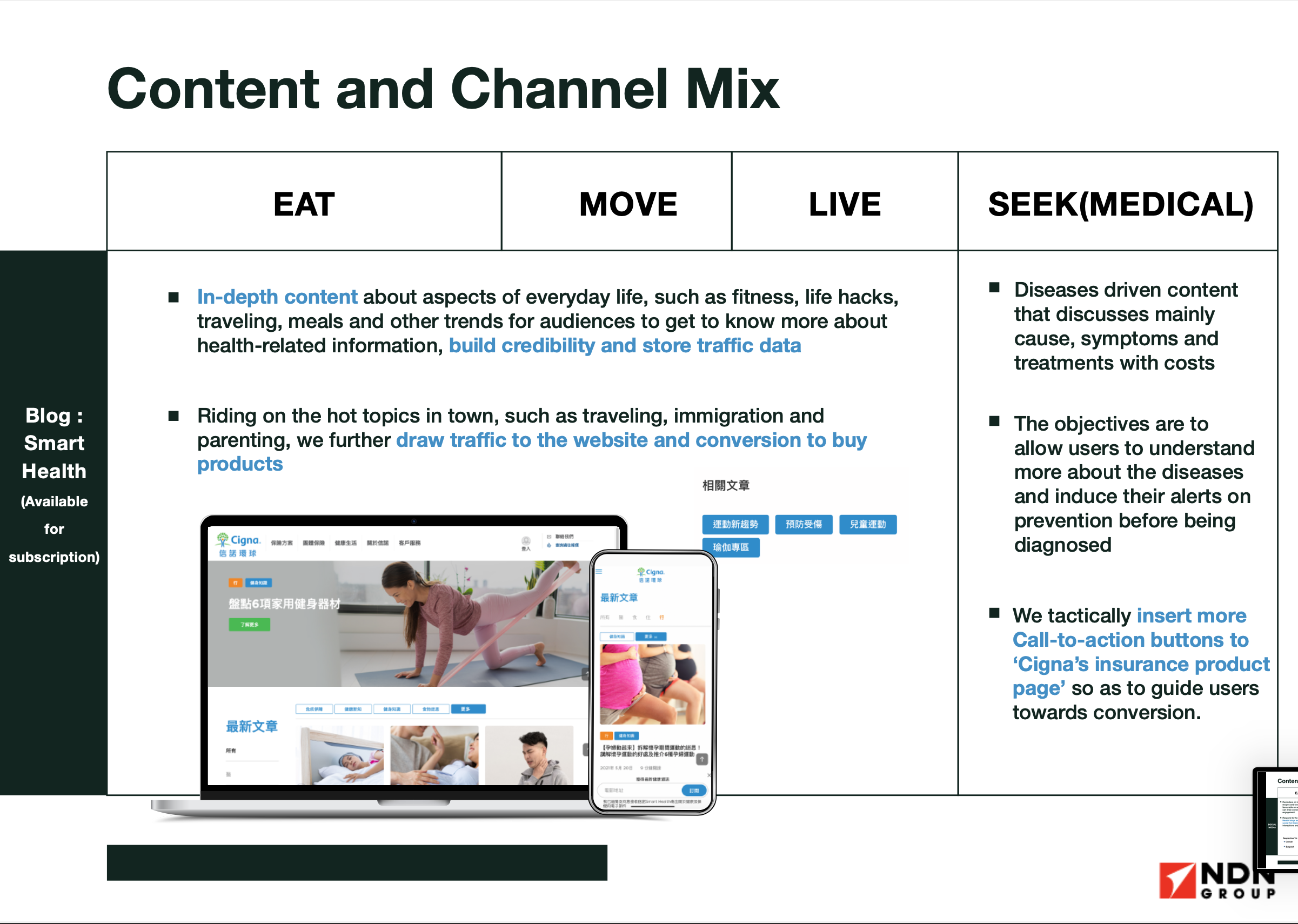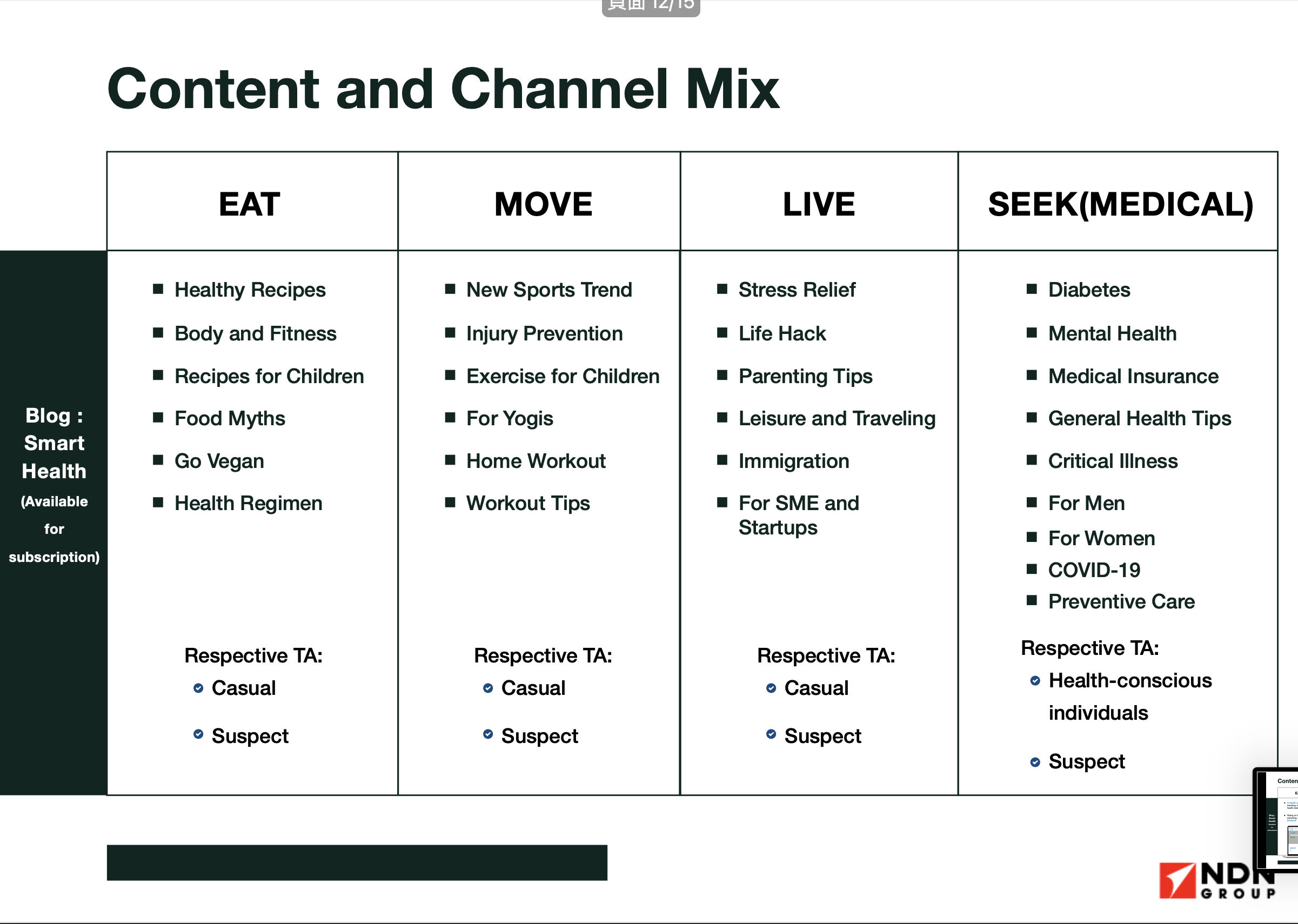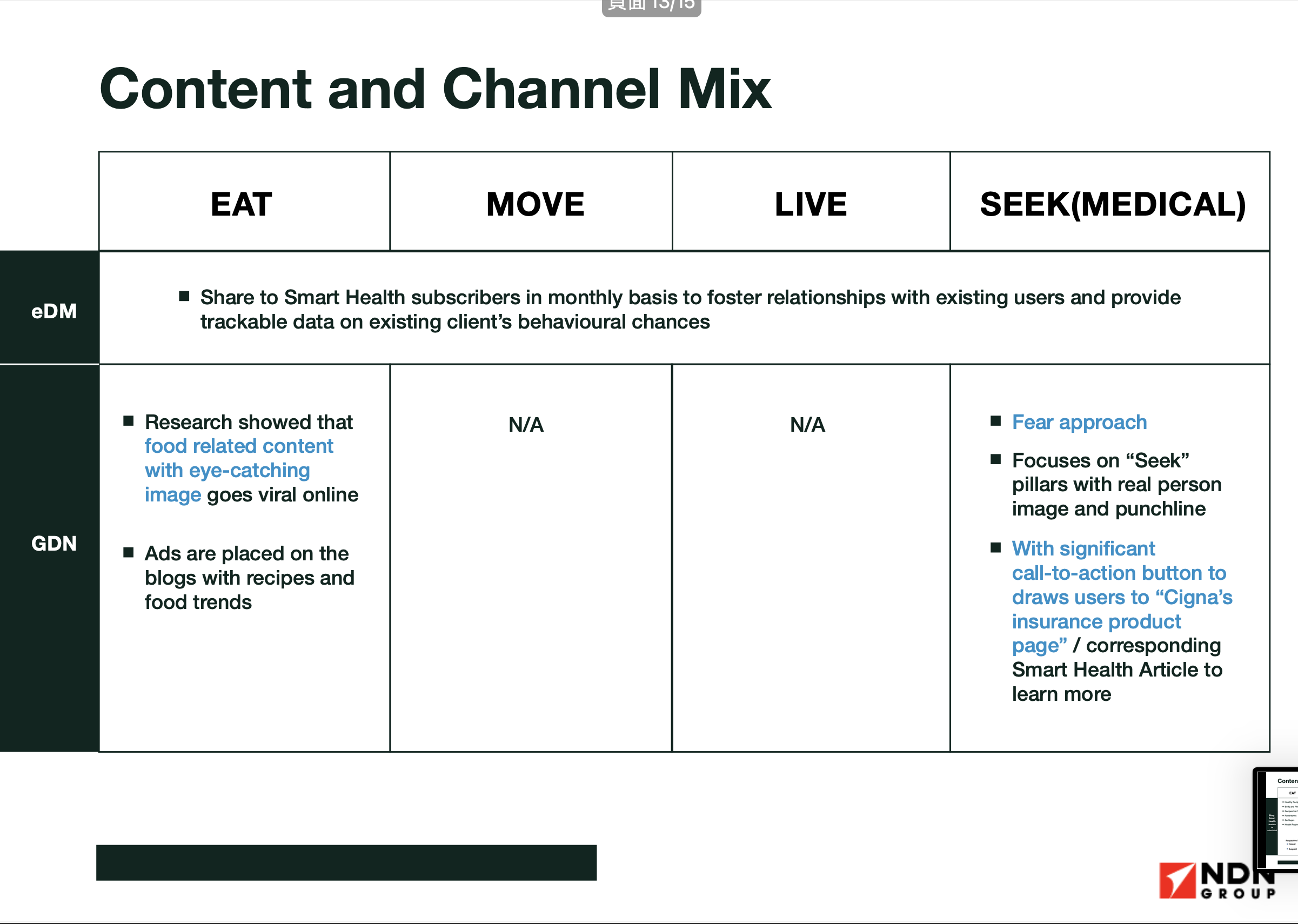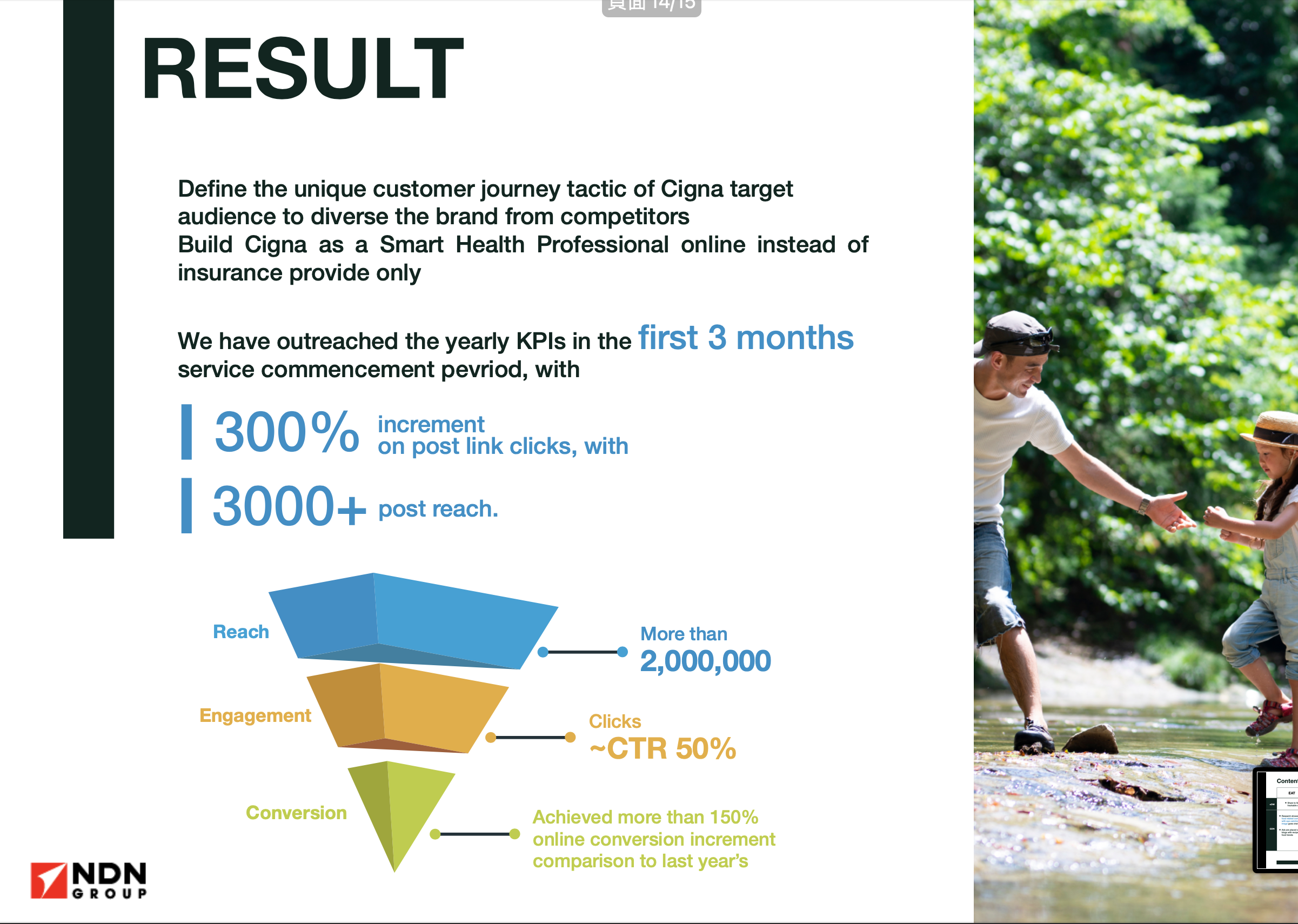A New Customer Journey with a UX Centric Methodology
Campaign: A New Customer Journey with a UX Centric Methodology
Company: NDN Group
Client: Cigna
Project Summary:
The growing health consciousness of individuals urged Cigna, a global health service provider from the U.S., to establish a solid presence and strengthen the connection between the brand and the target audience in Hong Kong.
We implemented the design thinking-based framework - the ‘Understand-Create-Deliver’ model to address the challenges. The framework was elaborated into a digital solution flow backed by a robust content and channel strategy, engaging users via six channels: social media, Google Display Network (GDN) ad placements, blogs, videos and eDMs. The integrated digital marketing mix leads the audience through a resonating journey.
Through identifying and segmenting Cigna’s target audience, Cigna built a significant presence in the market. The awareness, engagement and conversion of the audience sharply increased and outreached our competitors’. In 11-month service commencements, we achieved more than 2 million reaches, more than 50% clickthrough rate (CTR) and over 150% online conversion increase compared to previous years.
Background:
Going with a user-centric approach, NDN Group began with stakeholder research. We conducted face-to-face interviews with the audience to define project requirements and business goals. We have discovered the following insights via the research:
- Low brand awareness restraining market share growth
Cigna was not a name that is known profoundly in the Hong Kong market. The relatively limited exposures, in terms of the number of OOHs and commercials, hindered the audience to know the brand. For online channels, its official webpage and Facebook page with only sporadic updates concluded their digital presence. The loosely organised executions hindered the brand from gaining awareness and thus its market share.
- The ‘no broker’ feature shrunk direct communication opportunities with customers
Contrary to the fintech and digital implementations for insurers, local customers still relied heavily on agents and brokers for purchases and paperwork. As Cigna does not have any brokers, the brand had limited communication with its policyholders and prospects. It added difficulties to selling and upselling.
- Growing health consciousness, especially among young professionals
Consumers in Hong Kong were health-conscious, according to Nielsen's research. Our finding synthesised with the secondary source that a majority of participants aged 30-45 self-recognised as health-conscious individuals. They would actively seek information about living a healthy lifestyle and strived to stay healthy.
To successfully approach a wider audience, there was a pressing need for a stronger presence to raise brand awareness. Constant engagements via multiple touchpoints were also crucial to foster brand significance and make deals.
Objective:
We identified and committed to the following objectives for this digital project to resolve the pain points above:
- Define and segment Cigna’s target audience and positioning in response to the market trend
- Become the top-of-mind option of consumers and increase the brand’s share of wallets
- Formulate a comprehensive user journey with multiple touchpoints for ongoing awareness, reach and engagement with the target audience
- Curate tailored content that presents a distinct voice in the market
- Generate more leads, and drive conversion
In sum, the objectives directed Cigna to expand its market share, fortifying its competitive advantage and sustaining its growth.
Execution:
Combining methodology, consumer journey, and content and channel strategy, we addressed the challenges Cigna was facing and achieved the business objectives.
Methodology: ‘Understand-Create-Deliver’ Model
- Understand
Understanding the consumers’ needs and desires marked the beginning of the strategy formulation.
- Define
We identified three segments of target audience: ‘Casual’, the travel lover and connoisseurs; ‘Suspect’, young professionals aged 30-45; and ‘Health-Conscious’, sports lovers and health-conscious individuals.
- Ideate
We outlined content and channel strategy aiming to engage consumers at multiple digital touchpoints.
- Prototype
We came up with the prototype of Smart Health, a subscription-based content portal that included blogs. Digital touchpoints drove traffic to the blogs, thus Cigna’s official website.
- Test
Continuous tests were carried out to find the optimal content mix and format for better performance.
Consumer Journey - Digital Solution Flow
In the awareness phase, we reached out to our target customers via a wide array of digital touchpoints. We also gathered users’ behavioural data from Smart Health subscribers.
In the consideration phase, we solidified the trustworthy image of Cigna by delivering in-depth health and wellness content.
The audience were brought directly to the product page via banner click-throughs, completing the journey.
Content and Channel Mix
We pushed content themed ‘Eat’, ‘Move’, ‘Live’, and ‘Seek’ via a mix of social media, Google Display Network (GDN) ad placements, blogs, videos and eDMs to attain our targets.
Result:
The clearly defined target audience segments and the unique customer journey tactic contributed to the campaign’s success, distinguishing Cigna from its competitors. The Smart Health portal developed a professional and trustworthy image for Cigna to set the brand apart from its competitors.
Performance Metric
We have outreached the yearly KPIs in the first 3 months of service commencement period, with 300% increment on post link clicks with 3,000+ post reach.
In 11-month services commencements:
- Reach: more than 2,000,000
- Engagement - clicks: ~CTR 50%
- Conversion: achieved a 150% increase of online conversion compared to previous years
